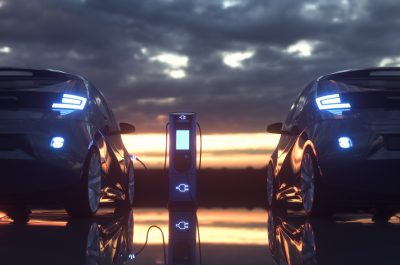Net Zero Australia – Mobilisation and Grid Firming
Net Zero Australia is a collaborative research partnership between the University of Melbourne, the University of Queensland, Princeton University and international management consultancy Nous Group. The study illustrates net zero pathways that reflect the boundaries of the Australian debate for both our domestic and export emissions. Its purpose is to help individuals, communities, companies, and governments appreciate the scale and complexity as well as the cost of achieving net zero.
Net Zero Australia released its latest mobilisation report[1], which builds upon previous modelling results (Fig. 1). This report gives insights into what governments, businesses and households should consider to accelerate our journey to net zero.
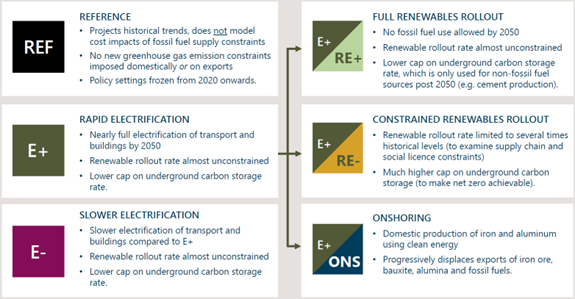
Fig. 1. Net Zero Australia’s six modelling scenarios[2].
Tackling Reliability
All of Net Zero Australia’s modelling scenarios considered the importance of the reliability of the whole energy system. Reliability describes continuous energy supply based on customers’ demand[3].
The Report emphasised the need for a weather-independent backup to support renewables in the form of gas-fired peaking generation and other alternative energy sources. This mitigates the risks of coal exits being unmatched with new renewable generation and rare but extreme events, known as “tail risks”[4].
So, what are these reliability risks?
Transitional risks – They are risks when coal-fired power plants close and are replaced by wind and solar . The potential mismatch in generation and demand can be caused by one or all of the following factors.
- Weather patterns affect yields of renewables, and having low sunlight and low wind conditions are not ideal. There is also the influence of clear skies and reduced wind speeds, which affect solar and wind power generation.
- Seasonal variations, particularly in winter, can bring extended periods of low or no renewable energy generation. This is due to shorter daylight hours, possibly with cloud cover and calmer wind. Just like Victoria in winter where high demand must be met by the local generation and imports and due to lower solar generation, batteries may not be fully charged for evening peaks. Other states also experience this, although to a lesser extent.
- Geographical location influences wind patterns and solar output. For instance, regions in valleys, locations with high cloud cover and coastal areas with calm winds may experience low renewable energy yields.
Tail risks – These risks are assumed to be rare events but will have severe impacts when they occur. Tail risks include the following examples.
- Extreme weather events including torrential downpours, intense heat and dangerous bushfires, are worsening across the country[5]. These pose an enormous threat to renewable energy output and infrastructure.
- Variable renewable energy (VRE) drought (Dunkelflaute) refers to an extended period where there is no sunshine or wind to generate enough renewable energy[6]. Future energy systems with high renewable energy penetration are at risk of this, impacting system reliability.
- Solar Eclipse will decrease solar generation because of the reduced radiation falling on the surface of solar panels, also called solar irradiance[7]. A recent example is the Exmouth eclipse in WA (Fig. 2). The next eclipse will broadly traverse NT and NSW in five years (22 July 2028). As with the Exmouth eclipse, having firming generation readily available will be crucial to meet demand while solar generation is reduced. Gas-fired generation and pumped hydro will be important elements to ensure reliability through these rare events.
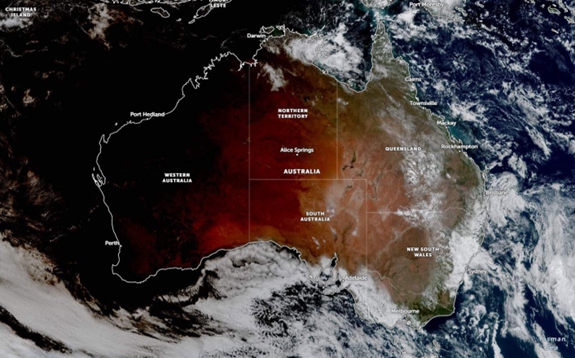
Fig. 2. Exmouth total solar eclipse last 20 April 2023 covering a significant portion of WA[8]. This event cut renewable energy generation by 700 MW. Satellite image originally processed by the Bureau of Meteorology from the geostationary satellite Himawari-8 operated by the Japan Meteorological Agency.
NEM’s Reliability Panel commenced a review to consider tail risks in future grid reliability[9]. The panel contemplates a new form of standard to limit tail risks. However, this will cost customers more to cope with more conservative standards[10].
What practical steps can we take to reduce these risks?
Timing – As coal power plants leave the energy market in the future, transitional solutions like gas-fired peaking generation will help on this journey. While this will start low from 35 per cent in 2025, based on Net Zero Australia’s modelling, the proportion of running at full capacity will continuously go down to around 10 per cent by 2035 (Fig. 3).
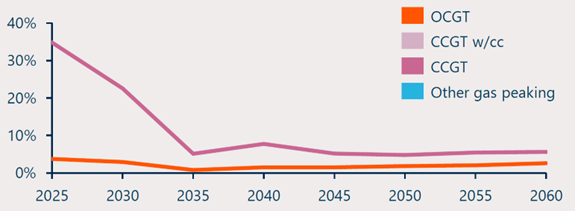
Fig. 3. Average gas capacity proportion of peakers running at full capacity in the E+ (Rapid Electrification) Scenario[11].
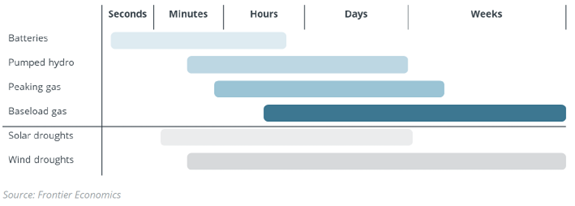
Fig. 4. Comparison of energy storage[12].
Diversity and Interconnection – Expanding the mix of our current renewable energy technologies will reduce reliability risks. Electrifying everything quickly can be tempting but can be risky if we experience renewable energy shortfalls from the sun and wind. More transmission will allow energy to flow between regions and will also open greater geographic diversity, improving reliability. The sun may not be shining in Victoria, but if it’s shining in Queensland, then greater interconnection can improve reliability in Victoria.
With the focus on electrification, we will need to carefully consider its impact on the whole energy system, including electricity system reliability.
Whole of system – We should think carefully and thoughtfully about the benefits and value that repurposed gas networks could provide, including the delivery of pure low-carbon hydrogen . Most plastic pipes in gas distribution systems are 100 per cent hydrogen-ready . Furthermore, biomethane can be delivered readily by our current gas infrastructure .
The strength of low-carbon hydrogen and biomethane is storing energy in readily available infrastructure for a longer period (Fig. 4), where they can match solar or wind droughts. Also, just like natural gas, low-carbon hydrogen and biomethane can be temporarily stored in pipelines acting as storage, called “line packing” .
While electric batteries are good solutions, we still need to consider the effect of mining finite resources and solve the challenge of recycling.
Final thoughts
The Net Zero Australia report finds that between $7 to $9 trillion dollars of investment will be required by 2060, depending on the scenario. A lot of this investment will be needed to build new generation capacity and interconnectedness and to ensure reliability of energy as we move away from dispatchable coal generation to higher levels of renewable generation.
These are massive investments that carry with them significant mobilisation challenges, like workforce constraints and social license, and require financing and approvals .
[1] Net Zero Australia, “Net Zero Mobilisation report: How to make net zero happen,” Jul. 12, 2023. https://www.netzeroaustralia.net.au/mobilisation-report/.
[2] Net Zero Australia, “Final modelling results,” Apr. 19, 2023. https://www.netzeroaustralia.net.au/final-modelling-results/.
[3] ARENA, “System security and reliability,” Australian Renewable Energy Agency, 2023. https://arena.gov.au/renewable-energy/system-security-reliability/.
[4] G. Parkinson, “Reliability standard may be changed to cope with wind, solar and nervous ministers,” RenewEconomy, Mar. 30, 2023. https://reneweconomy.com.au/reliability-standard-may-be-changed-to-cope-with-wind-solar-and-nervous-ministers/.
[5] CSIRO and BOM, “State of the Climate,” CSIRO, 2022. Accessed: Jul. 14, 2023. [Online]. Available: https://www.csiro.au/en/research/environmental-impacts/climate-change/state-of-the-climate
[6] C. Gilbert, “It’s dark, it’s still – it’s dunkelflaute,” Energy Networks Australia, Jun. 17, 2021. https://www.energynetworks.com.au/news/energy-insider/2021-energy-insider/its-dark-its-still-its-dunkelflaute/.
[7] M. Bloch, “Eclipse To Dim Australian Skies And Solar Energy Output,” Solar Quotes Blog, Apr. 19, 2023. https://www.solarquotes.com.au/blog/eclipse-solar-power-mb2902/ (accessed Jul. 14, 2023).
[8] AEMO, “Exmouth Eclipse,” 20 April 2023.
[9] AEMC, “The form of the reliability standard review commences,” AEMC, 2023. https://www.aemc.gov.au/news-centre/media-releases/form-reliability-standard-review-commences
[10] R. Esplin, F. Liu, and A. Vumbaca, “Advice on the form of the reliability standard,” 2023.
[11] Net Zero Australia, “Net Zero Mobilisation report: How to make net zero happen,” Jul. 12, 2023. https://www.netzeroaustralia.net.au/mobilisation-report/.
[12] Frontier Economics, “Potential for Gas-Powered Generation to support renewables,” 2021.
[13] Western Australian Government, “Study proves feasibility of gas to hydrogen pipeline conversion,” 2023. https://www.wa.gov.au/government/media-statements/McGowan-Labor-Government/Study-proves-feasibility-of-gas-to-hydrogen-pipeline-conversion-20230519.
[14] D. J. Wassenaar and D. P. Micic, “HDPE PIPE IS HYDROGEN.” 2020.
[15] IEA, “An introduction to biogas and biomethane – Outlook for biogas and biomethane: Prospects for organic growth – Analysis,” IEA, 2023. https://www.iea.org/reports/outlook-for-biogas-and-biomethane-prospects-for-organic-growth/an-introduction-to-biogas-and-biomethane (accessed Jul. 17, 2023).
[16] J. Mi and M. E. Khodayar, “Operation of natural gas and electricity networks with line pack,” J. Mod. Power Syst. Clean Energy, vol. 7, no. 5, pp. 1056–1070, Sep. 2019, doi: 10.1007/s40565-019-0547-0.
